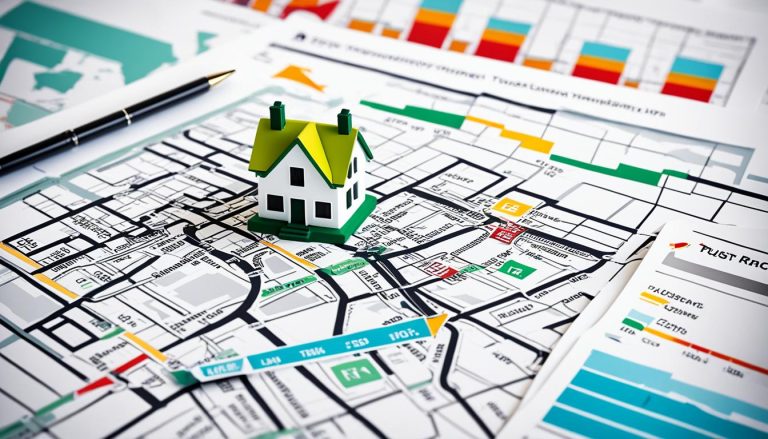Understanding the evolving landscape of property taxes in the UK is essential—especially if you’re stepping onto the property ladder for the first time.
Stamp Duty Land Tax (SDLT) has long been a significant cost consideration when buying a home, but upcoming changes in 2025 may impact how much first-time buyers will need to pay. In this guide, I’ll walk you through what’s changing, when, and how it could affect your savings (or expenses) as a future homeowner.
What Is Stamp Duty And Why Does It Matter For First-Time Buyers?

Stamp Duty Land Tax (SDLT) is a government tax that you must pay when purchasing property or land in England and Northern Ireland.
It’s calculated based on the price of the property you’re buying, and the amount you pay depends on a series of thresholds. First-time buyers benefit from relief schemes that reduce or eliminate this tax up to a certain property value, making it easier to enter the housing market.
This relief is particularly important because it can represent a significant saving—potentially several thousand pounds—which can instead be used towards your deposit, moving costs, or renovations.
The relief is designed to help first-time buyers get onto the property ladder by lowering one of the biggest upfront costs in the home buying process.
How Is Stamp Duty Changing In 2025 For First-Time Buyers?
The UK government has announced changes to Stamp Duty that will come into effect on 1st April 2025, and these revisions will significantly affect how much first-time buyers have to pay.
Currently, first-time buyers pay no Stamp Duty on properties priced up to £425,000, and a reduced rate of 5% on the portion between £425,001 and £625,000. If the property exceeds £625,000, no relief is available, and standard rates apply.
From April 2025, the 0% threshold will be lowered from £425,000 to £300,000, and the maximum purchase price that qualifies for relief will also be reduced from £625,000 to £500,000. Any property priced above £500,000 will no longer be eligible for first-time buyer relief.
These changes mean that more first-time buyers—particularly in high-cost areas—will have to pay Stamp Duty, and many will pay more than they would have under the current rules.
What Are The Current Stamp Duty Rates For First-Time Buyers? (Valid Until 31st March 2025)
Until 31st March 2025, first-time buyers can benefit from the following Stamp Duty rates:
Stamp Duty Rates (Until 31st March 2025):
| Property Price Range | Stamp Duty Rate |
| £0 – £425,000 | 0% |
| £425,001 – £625,000 | 5% on the portion above £425,000 |
| Over £625,000 | Standard SDLT rates apply |
Example:
Let’s say you’re buying a home for £450,000:
- First £425,000: 0%
- Remaining £25,000: 5% = £1,250
- Total Stamp Duty Payable: £1,250
This system provides an incentive for buyers to complete their purchase before the 1st April 2025 deadline. Homes under £425,000 attract no Stamp Duty, which is a major advantage in today’s market.
What Will The New Stamp Duty Rates Be From 1st April 2025?

When the new changes take effect in April 2025, the Stamp Duty structure for first-time buyers will become stricter.
Stamp Duty Rates (From 1st April 2025):
| Property Price Range | Stamp Duty Rate |
| £0 – £300,000 | 0% |
| £300,001 – £500,000 | 5% on the portion above £300,000 |
| Over £500,000 | Standard SDLT rates apply |
This means:
- If you buy a property for £325,000, you will pay 5% on the £25,000 above £300,000, which equals £1,250.
- If your property costs £510,000, you will receive no first-time buyer relief, and standard rates apply.
The changes reduce the number of people who will qualify for relief, particularly those buying in urban or high-demand regions where average property prices are above £300,000.
Who Will Be Most Affected By The 2025 Stamp Duty Changes?
The impact of the 2025 changes depends largely on where you’re buying your property. In areas where average house prices are below £300,000, most first-time buyers will continue to avoid paying Stamp Duty. However, in more expensive regions, many will now face a new tax burden.
Average Property Prices (August 2024, UK House Price Index):
- UK National Average: £293,200
- London: £531,000
- South East England: £395,000
- South West England: £370,000
- East of England: £380,000
In cities like London, where the average property price is over £500,000, most first-time buyers will not qualify for relief under the new system and will have to pay full Stamp Duty at standard rates.
In regions like the South East, South West, and East of England, where average property values lie between £300,001 and £500,000, the cost of buying a home will increase, as more buyers will now pay 5% on part of their purchase.
This change will be less impactful in northern regions and some rural areas where property prices remain below £300,000.
How Can I Calculate My Stamp Duty As A First-Time Buyer?
There are several online tools you can use to calculate how much Stamp Duty you’ll pay based on the purchase price and your eligibility for relief. Gov.uk, NatWest, and many estate agents offer calculators that break down exactly what you’ll owe.
Sample Stamp Duty Calculations:
| Purchase Price | Before April 2025 | After April 2025 |
| £275,000 | £0 | £0 |
| £350,000 | £1,250 (5% of £25,000) | £2,500 (5% of £50,000) |
| £480,000 | £2,750 (5% of £55,000) | £9,000 (5% of £180,000) |
| £525,000 | No relief; standard rate | No relief; standard rate |
The key is to calculate based on the amount above the 0% threshold, not the full property value. Make sure your solicitor confirms the exact figure during the conveyancing process to avoid surprises.
Should I Buy Before April 2025 To Save On Stamp Duty?
There are compelling reasons to consider purchasing your home before the 2025 Stamp Duty changes take effect:
- Larger 0% Threshold: Buying before the deadline lets you take advantage of the £425,000 threshold.
- Greater Relief Window: The relief currently applies up to £625,000, giving you more flexibility on price.
- Potential Savings: You could save up to £6,250 in tax depending on your property value.
However, it’s important to balance this with the realities of the market:
- Rushing into a purchase to meet the deadline could result in overpaying or settling for a property that doesn’t meet your needs.
- Conveyancing delays and high demand closer to the deadline could slow things down.
- Interest rates or house prices could also shift by then, affecting your affordability.
Plan ahead, secure mortgage pre-approval, and consult with professionals to ensure your timeline is realistic and beneficial.
What Government Support Is Available For First-Time Buyers In The UK?

Besides Stamp Duty relief, the UK government offers several other schemes to help first-time buyers enter the housing market.
Key First-Time Buyer Support Options:
- Lifetime ISA (LISA): Save up to £4,000 a year and receive a 25% government bonus to use for your first home (up to £450,000 property value).
- First Homes Scheme: Offers newly built homes at a 30%–50% discount to local first-time buyers and key workers.
- Shared Ownership: Buy a share of a home (between 10% and 75%) and pay rent on the remainder. Ideal for lower-income buyers.
- Help to Buy Equity Loan: Now closed to new applicants in England, but variations exist in Wales and Scotland.
Combining these options with Stamp Duty relief could significantly reduce the financial barriers to homeownership.
How Do Stamp Duty Changes Impact Long-Term Affordability?
Stamp Duty is often one of the largest upfront costs in buying a home, and it can influence your budget, deposit, and financial planning. With the 2025 changes, buyers will need to save more for tax and have less flexibility when budgeting for other moving or renovation costs.
Effects on Long-Term Affordability:
- Higher Entry Costs: Increased Stamp Duty adds to your initial cash outlay.
- Reduced Cash Flow: Paying more upfront could leave less for furnishing or unexpected repairs.
- Impact on Mortgage Size: You might need to reduce your mortgage offer if Stamp Duty takes up more of your funds.
Understanding these impacts ahead of time will help you better plan for homeownership and avoid financial stress later.
How Do First-Time Buyers Pay Stamp Duty?
Even if you’re a first-time buyer who qualifies for Stamp Duty relief, you are still required to file a Stamp Duty return with HM Revenue and Customs (HMRC). This is a legal requirement, even if no tax is due.
In most cases, your solicitor or conveyancer will handle this process on your behalf as part of the property transaction. However, it’s essential to ensure it’s done correctly and on time to avoid any penalties.
If you do owe Stamp Duty—based on your purchase price and the applicable thresholds—you’ll need to make a payment directly to HMRC. The process is straightforward and follows a standard set of steps.
Standard Stamp Duty Payment Process:
- Submit Your Return: A Stamp Duty Land Tax (SDLT) return must be submitted to HMRC within 14 days of your completion date.
- Use Your Transaction Reference: You’ll be assigned an 11-character transaction reference number which must be included with your payment.
- Choose Your Payment Method: Payments can be made online through internet banking, via Faster Payments, BACS, CHAPS, or even by cheque if necessary.
Penalties for Late Stamp Duty Filing:
Failing to file your Stamp Duty return on time can lead to financial penalties—even if you don’t owe any tax. HMRC imposes the following fixed penalties for late filing:
| Delay in Filing | Penalty |
| Up to 3 months late | £100 |
| More than 3 months late | £200 |
These penalties can increase further if your payment is delayed or if interest accrues on outstanding tax. To avoid unnecessary charges, always ensure that your solicitor has submitted the return promptly and verified any payment amounts due.
This part of the buying process is just as important as your mortgage or deposit, so it’s worth double-checking that everything has been handled correctly and on time.
How Can I Prepare For The Stamp Duty Changes As A First-Time Buyer?
If you’re planning to buy a home within the next 12 to 18 months, here are some steps to take to stay ahead of the 2025 changes:
First-Time Buyer Preparation Checklist:
- Review Your Budget: Include the potential new Stamp Duty amount in your deposit and closing costs.
- Use a Stamp Duty Calculator: Stay informed about how much you’ll owe at different price points.
- Get Mortgage Pre-Approval: Know your buying limits early.
- Monitor the Market: Look for areas where property prices are under the £300,000 or £425,000 thresholds.
- Consult a Mortgage Advisor or Solicitor: Get advice tailored to your situation.
- Act Early: If you’re aiming to buy before April 2025, start the process sooner rather than later.
With good planning, you can still make a smart, tax-efficient decision regardless of when you buy.
How Does Stamp Duty Differ In Scotland And Wales?

If you’re buying your first home in Scotland or Wales, the rules around Stamp Duty are different from those in England and Northern Ireland, as each devolved nation manages its own property tax system.
In Scotland, the equivalent of Stamp Duty is called the Land and Buildings Transaction Tax (LBTT). First-time buyers in Scotland benefit from full LBTT relief on homes priced up to £175,000. This threshold is slightly lower than England’s current £425,000, but still provides a meaningful saving for entry-level buyers in the Scottish property market.
Importantly, although LBTT is scheduled to change from 1st April 2025, the first-time buyer threshold of £175,000 remains unchanged. This offers some stability for those planning to buy in Scotland over the next year.
In Wales, the tax is known as Land Transaction Tax (LTT). While Wales does not offer a specific relief scheme for first-time buyers, no LTT is due on properties priced up to £225,000. This higher general threshold means that most entry-level buyers in Wales avoid paying any property tax at all, regardless of whether they are first-time purchasers.
Summary of First-Time Buyer Stamp Duty Thresholds (2025):
| Nation | Local Tax Name | 0% Tax Threshold (First-Time Buyers) |
| England | Stamp Duty Land Tax (SDLT) | £300,000 (from April 2025) |
| Scotland | Land and Buildings Transaction Tax | £175,000 |
| Wales | Land Transaction Tax | £225,000 (no specific FTB relief) |
Understanding the differences between these systems is essential if you’re considering a move across borders within the UK. Your potential tax bill could vary by thousands of pounds, depending on where you choose to buy.
Conclusion
The upcoming Stamp Duty changes for first-time buyers could cost some purchasers thousands of pounds—especially in higher-priced areas. If you’re eyeing a property before April 2025, the current rates could offer you valuable savings. But even after the changes, knowing where and what to buy, and using tools and schemes available, can help you manage the costs.
Whether you’re just beginning your property journey or actively house hunting, being aware of these Stamp Duty shifts ensures you make the most financially sound decision possible.
FAQs About Stamp Duty For First-Time Buyers In 2025
What Is The Definition Of A First-Time Buyer In The UK?
A first-time buyer is someone who has never owned property in the UK or abroad, including jointly or through inheritance.
Can I Claim First-Time Buyer Relief If I’m Buying With Someone Who Has Owned A Home?
No. All parties must be first-time buyers to qualify for the relief.
Do I Pay Stamp Duty On Leasehold Properties?
Yes, Stamp Duty applies to both leasehold and freehold purchases if they exceed the relevant thresholds.
What Happens If I Buy A House Just Over £300,000 After April 2025?
You’ll pay 5% Stamp Duty on the amount over £300,000. For example, a £310,000 property will incur £500 in tax.
Is Stamp Duty Different In Scotland Or Wales?
Yes, Scotland has Land and Buildings Transaction Tax (LBTT), and Wales has Land Transaction Tax (LTT). Different thresholds and rates apply.
Can I Add Stamp Duty To My Mortgage?
Some lenders allow this, but it increases your loan size and interest payments. It’s usually better to pay it upfront if possible.
Will There Be Further Stamp Duty Changes After 2025?
There’s no confirmed update beyond April 2025, but future governments could revise property tax rules depending on the housing market and budget needs.






